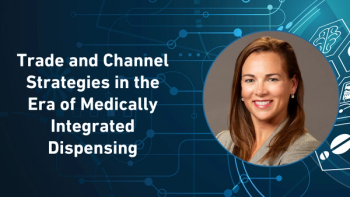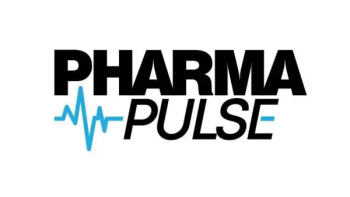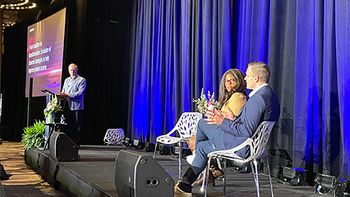Earlier this week, per Bloomberg, President Trump told reporters that the pharmaceutical sector should prepare for levies by the beginning of next month, which could coincide with the planned reciprocal tariffs rates that were previously set.1
He described it as being a “low tariff” that would slowly increase over the course of approximately a year.
Potential tariff hike could still reach 200% over time
With pharma stakeholder patiently awaiting developments, Trump had previously stated that import taxes of up to 200% could be forthcoming. It’s important to point out that his timeframe for it to hit this amount originally stood at around the year to year-and-a-half mark, which is slightly different than what was stated this week.
No other specifics were given as to what the initial tax rate would be to start off (although there were talks of 25%), and if the end result will be those aforementioned 200% rate. However, also taking effect Aug. 1 would be the 25% import tax on both Japan and South Korea, along with new taxes on a dozen other nations.2 This was in response to a 90-day negotiating period on country-specific US tariffs that had expired on July 9.
“If for any reason you decide to raise your Tariffs, then, whatever the number you choose to raise them by, will be added onto the 25% that we charge. Please understand that these Tariffs are necessary to correct the many years of Japan’s Tariff, and Non Tariff, Policies, and Trade Barriers, causing these unsustainable Trade Deficits against the United States,” Trump wrote in a letter to Japanese Prime Minister Shigeru Ishiba.
Key Takeaways
- President Trump announced that pharmaceutical companies should expect new import tariffs starting Aug. 1, with rates starting low and potentially rising to 200% within a year.
- The levies aim to encourage domestic manufacturing of pharmaceuticals and support recent legislation tied to tax reforms and infrastructure funding.
- Pharma companies like Thermo Fisher are investing heavily in US operations, including a $2 billion plan and the acquisition of Sanofi’s sterile drug manufacturing site to expand capacity.
Tariffs aimed at reshoring manufacturing to the US
According to Trump, these import taxes are necessary to not only help guide the reshoring of manufacturing efforts back to the United States, but also contribute to financially supporting the “Big, Beautiful Bill” that he had officially signed the Fourth of July. The bill builds on the 2017 Tax Cuts and Jobs Act, making most tax reductions permanent while raising funding for border security, defense, and energy production.
Pharma companies accelerate domestic manufacturing investments
Many companies—including Regeneron, Roche, Merck, and Thermo Fisher Scientific—have been make a conscious effort of reshoring manufacturing to the United States to avoid the impending tariffs, a procedure could take several years if current infrastructure isn’t in place.2 Most recently, in a deal expected to close later this year, Thermo acquired Sanofi’s sterile drug product manufacturing facility in Ridgefield, NJ.3
The deal is anticipated to enhance its US-based sterile fill-finish capacity and strengthen its ability to serve Sanofi along with other pharma and biotech clients seeking domestic manufacturing solutions.
“Sanofi’s Ridgefield site will strengthen our US manufacturing capabilities, enabling us to better support our pharmaceutical and biotech customers with the critical production capacity needed for essential medicines,” commented Marc N. Casper, chairman, president, CEO, Thermo Fisher. “We will also expand and further strengthen our long-standing partnership with Sanofi, while investing to bring additional capacity and enhanced capabilities at this site. We look forward to welcoming all Ridgefield employees to Thermo Fisher later this year.”
This follows the company’s intention to increase its manufacturing services—particularly in the life sciences field—demonstrated by a $2 billion investment toward boosting US operations over the next four years.
The breakdown includes $1.5 billion in capital expenditures to grow its manufacturing and $500 million towards R&D direct toward new innovations. Clients can also expect a growth its domestic network of 64 manufacturing facilities across 37 states to increase.
References
1. Dlouhy JA, Sink J. Trump Says Drug Tariffs Probable by Aug. 1, Downplays More Deals. Bloomberg. July 15, 2025. Accessed July 17, 2025. https://www.bloomberg.com/news/articles/2025-07-15/trump-says-drug-tariffs-probable-by-aug-1-downplays-more-deals
2. Saraceno N. Trump: Pharma Industry Should Brace for up to 200% Tariffs. Pharmaceutical Commerce. July 9, 2025. Accessed July 17, 2025. https://www.pharmaceuticalcommerce.com/view/trump-pharma-industry-200-percent-tariffs
3. Tracy D. Thermo Fisher, Sanofi Expand Partnership to Boost Sterile Drug Production. Pharmaceutical Commerce. July 16, 2025. Accessed July 17, 2025. https://www.pharmaceuticalcommerce.com/view/thermo-fisher-sanofi-expand-partnership-boost-sterile-drug-production





